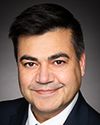Thank you to our witnesses today.
I'm going to be focusing mostly with Mr. Boda on my province and the election they just held.
As a little bit of context for my questions, the American election going on right now. I'm sure we're all anxious to see the results from down south. I have confidence in our electoral system here in Canada versus some of the problems that might come out of having a decentralized, state-run election. It will be very interesting tonight to see how that unfolds.
I have a couple of technical questions for Michael Boda, as we're all political geeks here. We all get elected, especially the members on the call here.
A ballot usually has a counterfoil. Maybe some of the members don't remember working past elections as scrutineers, not as candidates. We have an issue in Saskatchewan with the counterfoil, which is part of the ballot. The counterfoil is made out of the same material and looks the same. It's used so that we can reference how many ballots are in the ballot box versus how many are voted. You separate the counterfoil, and then you can count them afterwards.
The problem we experienced in Saskatchewan is that the counterfoil was also put in the ballot box, or was encouraged to be. That's where it ended up. Then when they opened the ballot box to count, I have heard numerous stories of issues with that.
Mr. Boda, would you encourage other elections not to put the counterfoil in the ballot box?




